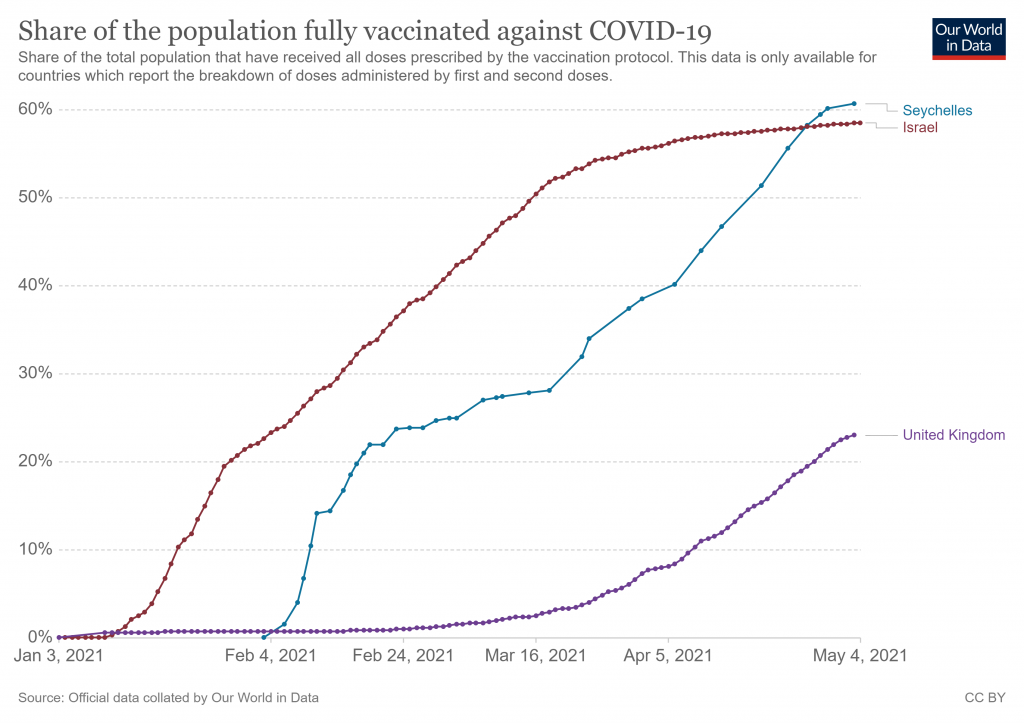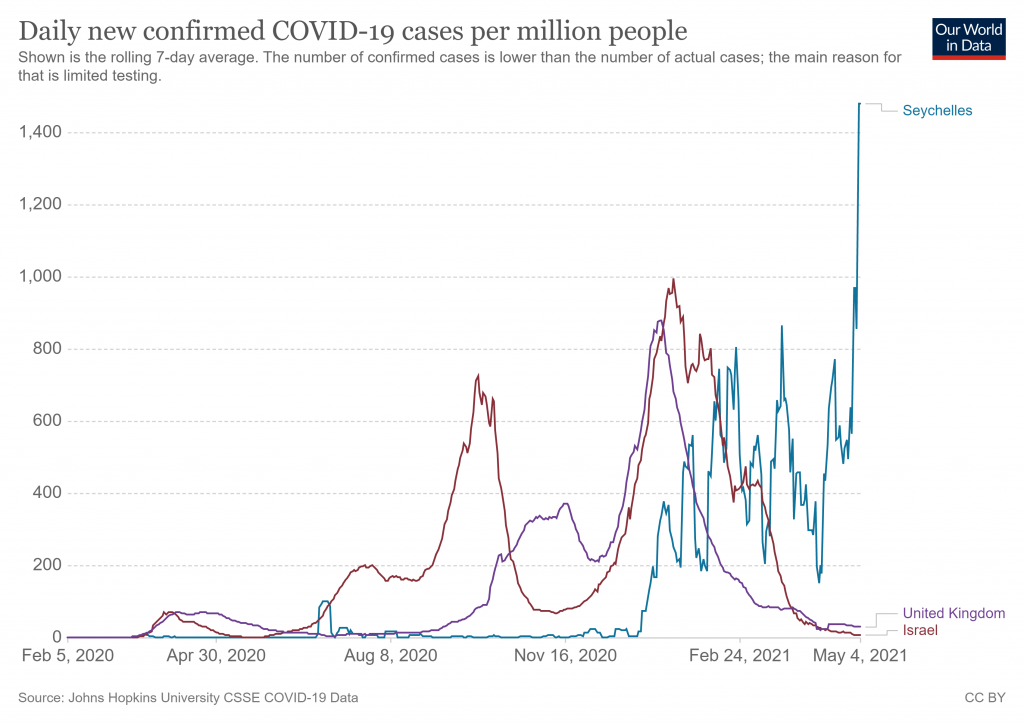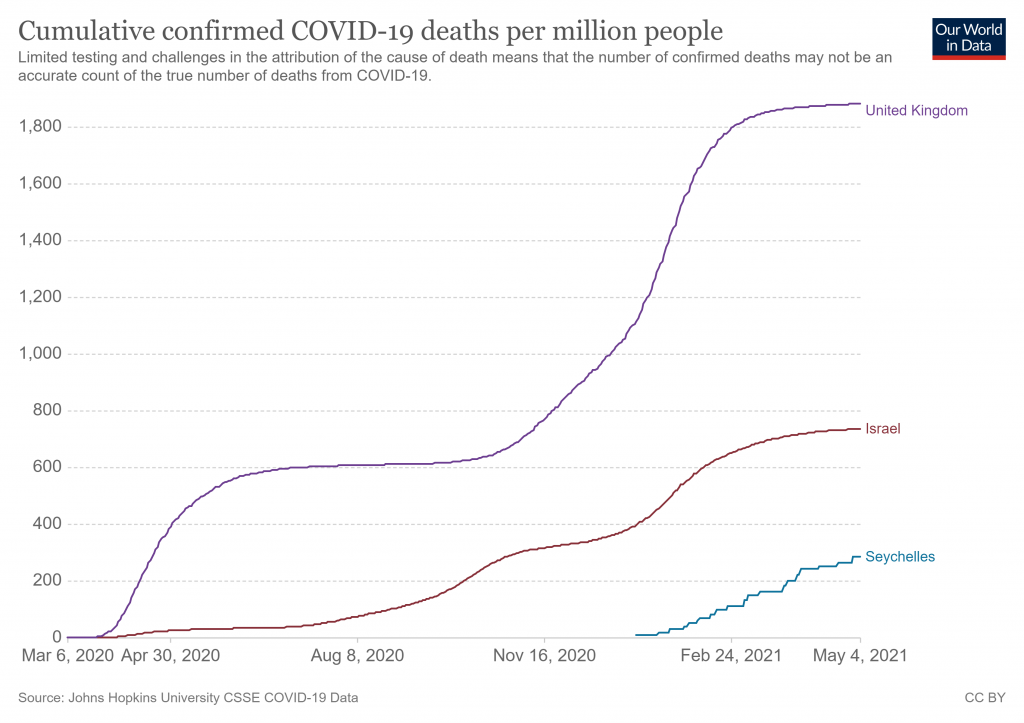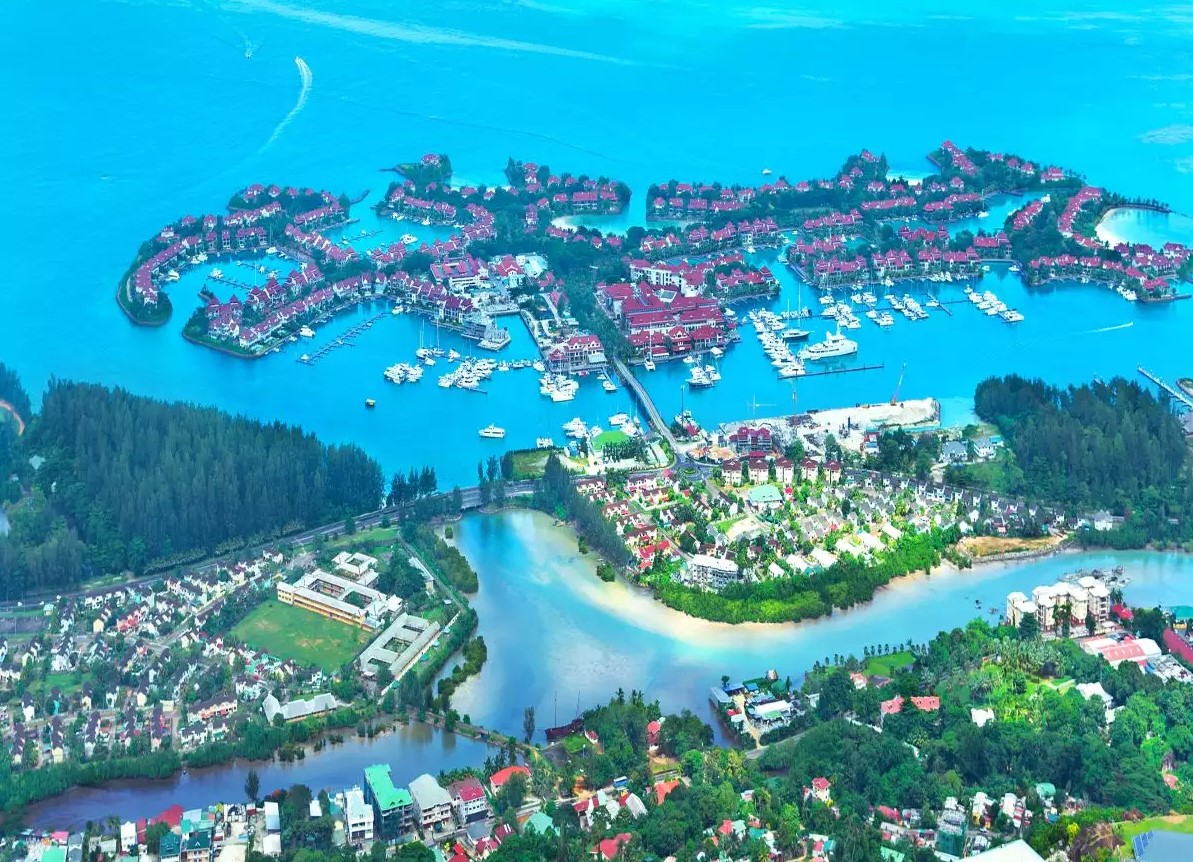Seychelles, an archipelago nation in the Indian Ocean with a population of about 98,000, is locking down again – even though it has fully vaccinated more than 60% of its adult population with two vaccine doses, more than any other country in the world including Israel.

The country has banned the intermingling of households, closed schools, imposed curfews on bars and cancelled sporting activities for two weeks as infections surge.

The country began vaccinations in January using a donation of Chinese vaccines from the United Arab Emirates. According to Bloomberg, by April 12th, “59% of the doses administered were Sinopharm vaccines and the rest were Covishield, a version of AstraZeneca’s shot made under licence in India.”
The Government put the surge down to people being less careful, particularly over Easter. However, setting aside whether population behaviour is a plausible explanation, this doesn’t explain why the vaccines are not preventing transmission or infection.
AstraZeneca and Sinopharm vaccines, particularly the latter, have not performed as well as Pfizer and Moderna vaccines in trials. Is this part of the explanation? Are they less effective in the vulnerable? Or perhaps they are better at preventing serious illness and death than mild or asymptomatic infection. Seychelles is still in its first wave, which only began at the end of December. Its deaths are still low and it will be interesting to see how they rise during this surge in positive cases. (There is no data available on testing numbers so we can’t see what role that might be playing.)

The late December epidemic began prior to the vaccination campaign starting in mid-January, but became worse during the roll out and has accelerated in the last week or so. Did the post-vaccine infection spike play a part? The fact that the country had not experienced a wave of COVID-19 before December means the acquired immunity levels are likely to have been lower than elsewhere.
A number of countries have low infection levels at the moment, including the UK and Israel with high vaccination rates, and Portugal (9% fully vaccinated) and South Africa (0.6%) with low vaccination rate.
The question is, if the vaccines don’t provide a way out, then why is the Seychelles locking down? The lockdown was originally supposed to “flatten the curve” until a vaccine came along. Once the population is vaccinated you might as well stop locking down because there’s nothing else to wait around in quarantine for. That a country that has fully vaccinated nearly two thirds of its population is locking down again as infections surge is ominous indeed.












To join in with the discussion please make a donation to The Daily Sceptic.
Profanity and abuse will be removed and may lead to a permanent ban.